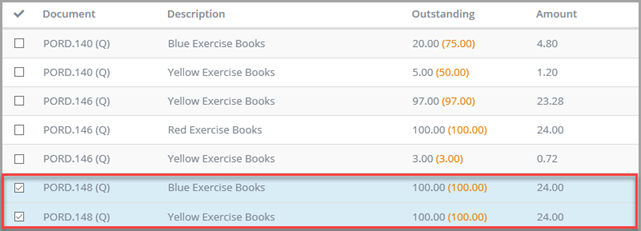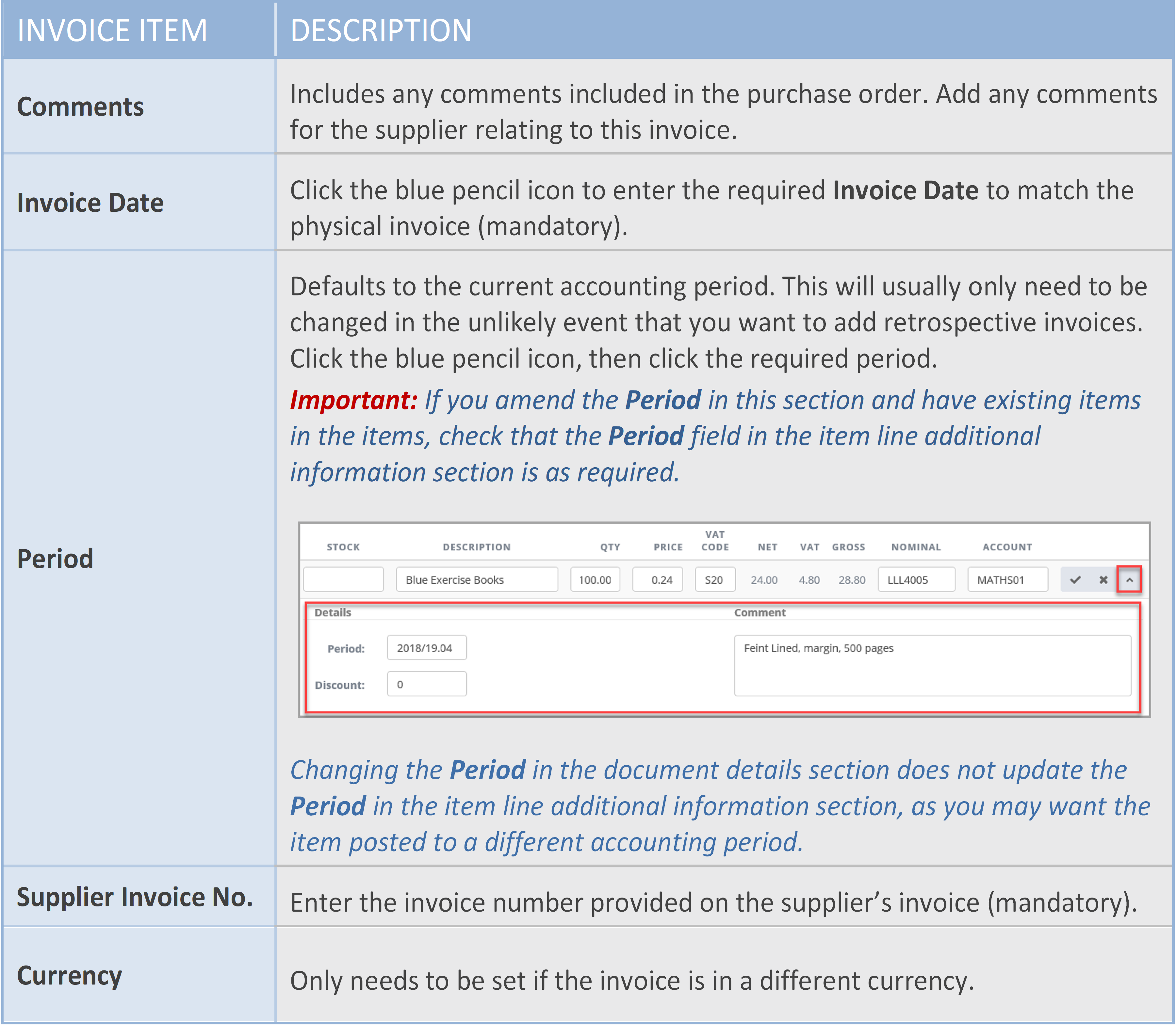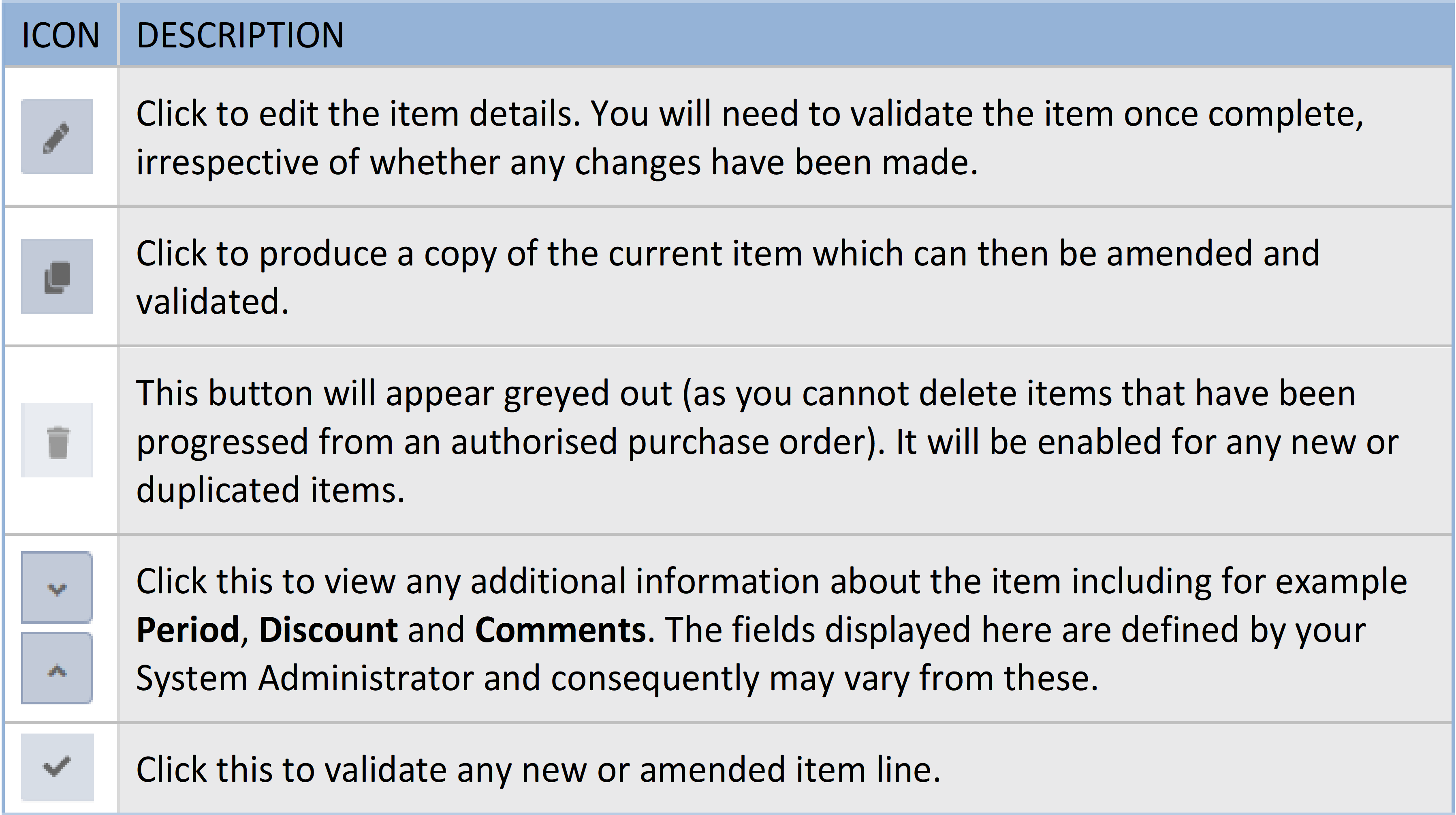Processing Purchase Invoices
Invoices should be added to the system when a physical invoice is received from the applicable supplier. This process generates an invoice from an authorised purchase order, which can then be checked against the supplier invoice and amended as required. This process also automatically creates a POIN in IRIS Financials.
An invoice can only be processed if:
- The purchase order has been produced and authorised.
- A GRN has been generated to confirm that the goods have been received or services carried out.
- An invoice has been received from the supplier.
If the Invoice icon or any other settings mentioned in this article are not visible, the System Administrator will need to review the settings as described in Giving Usergroups Access to IRIS Purchasing.
Processing a purchase order invoice
- From the IRIS Purchasing Home page, click the Invoice icon.
- By default, a list of suppliers with goods received notes is displayed in the Select your Supplier window.
-
Either scroll through the list, or search for the required supplier via the Search Criteria field at the top of the window. You can enter any element of the supplier's account code or name/title. The list will reduce based on the criteria entered.
The Load Indices check box is selected by default to improve the search performance. It should be left selected. For maximum efficiency, suppliers are loaded 20 at a time. As you scroll through the list, more suppliers will be loaded. A slight delay might be noticeable on slower internet connections.
-
Click the required supplier to select them. The Select your details lines window is displayed.
The list is ordered by the date that the GRN was added to the system. It is therefore important to note that if multiple GRNs were produced for the same order, they may not appear sequentially in the list (and may not be visible in the initial display if the list is long).

If the required order is not visible, simply enter the order number in the Filter detail lines section.If the required purchase order items are not displayed in the list, please check that a goods received note (GRN) has been created. Only purchase orders that have been processed to goods received are displayed. If any items have not arrived or have been damaged, please see the Dealing with Missing or Damaged Items article.
- Lines from any purchase orders for the chosen supplier will be displayed. In the previous example, there are several purchase orders for exercise books as we have produced several orders to demonstrate the various invoicing scenarios.
-
Select the order item lines required for the invoice then click the Progress button. In this example, all the goods have arrived, and the invoice matches the purchase order.

- The details from the chosen orders/GRNs are then progressed to the invoice
Check the invoice details as follows:
- Next review the individual items. The icons adjacent to the items can be used to make amendments as follows:

- Check the quantity and price match the supplier's invoice. Click the Edit icon if any changes are required.
- If any items have not arrived/been damaged, please see Dealing with Missing or Damaged Items.
- If there are delivery charges on the supplier invoice that have not been accounted for in the purchase order, or you want to apply delivery charges to a different nominal/account, please see Dealing with delivery charges.
- If any items have not arrived/been damaged, please see Dealing with Missing or Damaged Items.
- Next check the VAT Code to ensure that the goods are invoiced To change the rate, hover over the VAT CODE field, click the magnifying glass then select the required VAT code.
From time to time, there may be rounding differences where the supplier's finance system has rounded the amount differently to IRIS Purchasing. If this is the case, you will need to amend the NET and VAT values (by clicking the pencil icon) to match the supplier's invoice values.
-
Check that the nominals to which the items relate are correct. This can be changed by hovering over the Nominal field, clicking the magnifying glass, then clicking the required nominal from the Select window.
- Alternatively, enter a relevant word, e.g. books in the Nominal field. The system will display any matching nominals. Select the required nominal from the drop-down list.
- Also check that the correct cost centre account is displayed in the Account field. If required, this can be amended using the same process as for nominals.
Dealing with prepayment invoices
There may be occasions when invoices need to be created for subscriptions or insurances (for example) that are invoiced annually, but the expenditure needs to be split across the relevant accounting periods. For more information, please see the Processing Prepayments in IRIS Purchasing article.
Checking/applying discounts
Discounts may have been included in the requisition or purchase order, if for example, the person placing the order knew that a discount had been offered. At invoice stage, discounts can only be applied to individual lines.
You will need to check any existing discounts are correct and/or ensure any discounts from the supplier invoice have been accounted for.
If the discount was not applied at the purchase order stage, apply it using the process described in the Applying Discounts in IRIS Financials Purchasing article.
Dealing with delivery charges
Supplier delivery charges are not usually known at the order stage and/or if they are known, the person creating the order may not have access to apply the delivery charge to the applicable nominal/account.
- If the delivery charge is correctly included in the invoice, check that the delivery is applied to the correct nominal/account. The invoice can then be progressed.
- If a delivery charge has not been included in the order, create a new line in the invoice, add the delivery details and cost applying to the applicable nominal/account. The invoice can then be progressed. The delivery cost will correctly show up as a discrepancy for audit purposes.
- If the delivery charge has been included in the order, but is a higher amount in the invoice, this amount must be amended (to ensure that it is paid). Check that the delivery is applied to the correct nominal/account. The invoice can then be progressed. The difference in delivery cost will correctly show up as a discrepancy for audit purposes.
Dealing with supplier split invoices
If the supplier has split the order across several invoices (e.g. four invoices for 25 blue and 25 yellow exercise books), use the process outlined in the Dealing with Split Invoices in IRIS Financials Purchasing article.
Dealing with invoices where items are missing/damaged
The process for dealing with missing or damaged items very much depends on what has been agreed with the supplier and/or what has been recorded in the goods received note (GRN). Please see the Dealing with Missing or Damaged Items article.
Viewing or adding attachments
For more information, please see the Adding Attachments topic.
- To add an attachment, click the Attachment icon at the top of the purchase order and select the required file(s) from the Choose File to Upload Alternatively, drag the required file(s) from Windows Explorer anywhere onto the requisition.

- Once attached, documents can be viewed by hovering over the Attachment icon at the top of the document, then selecting the required attachment name.